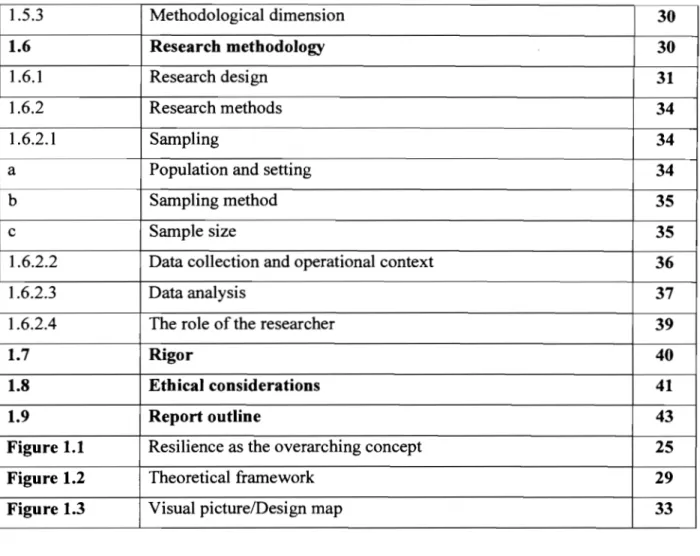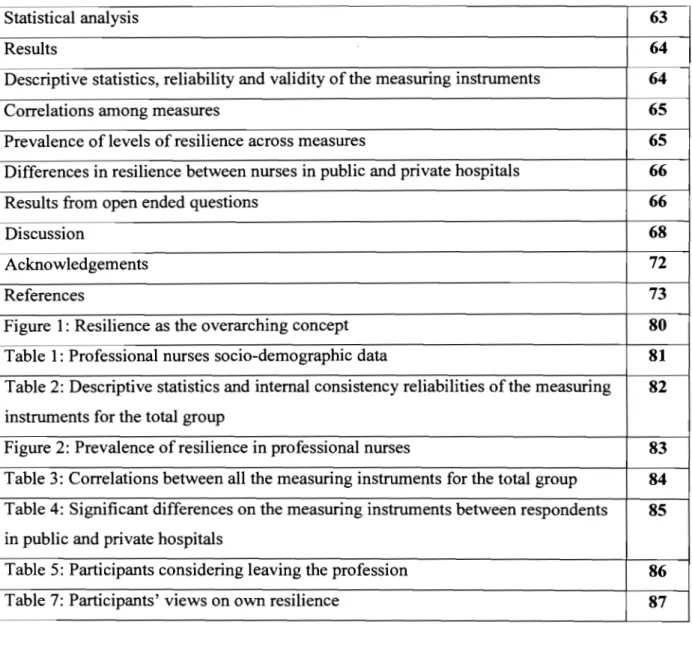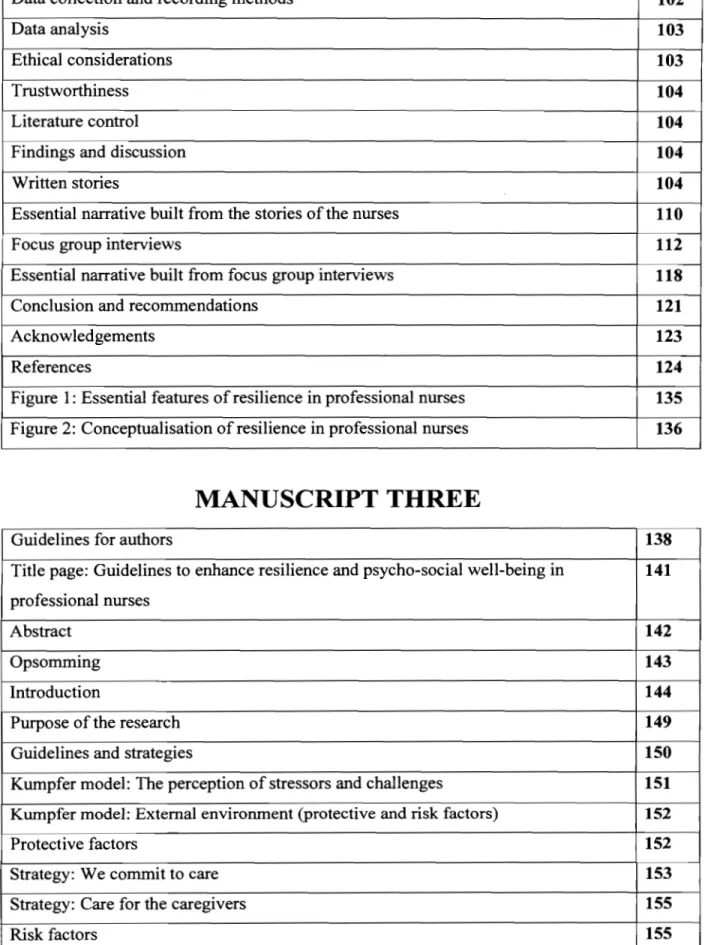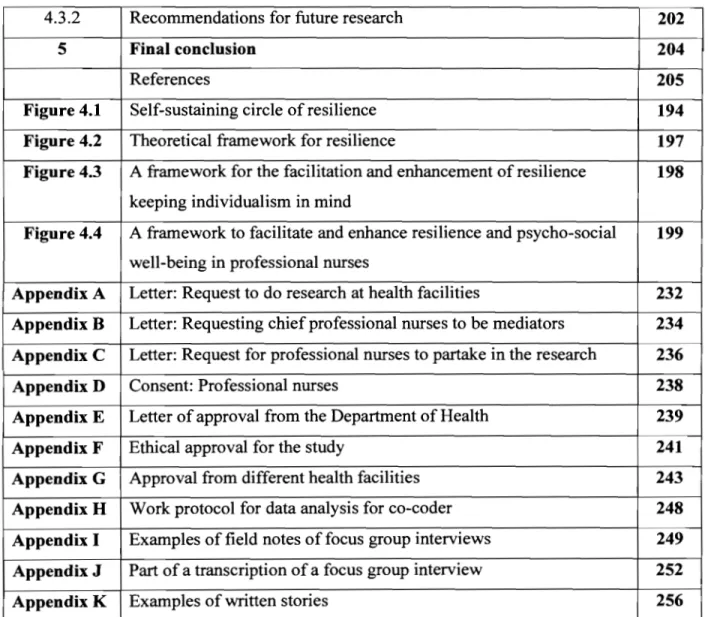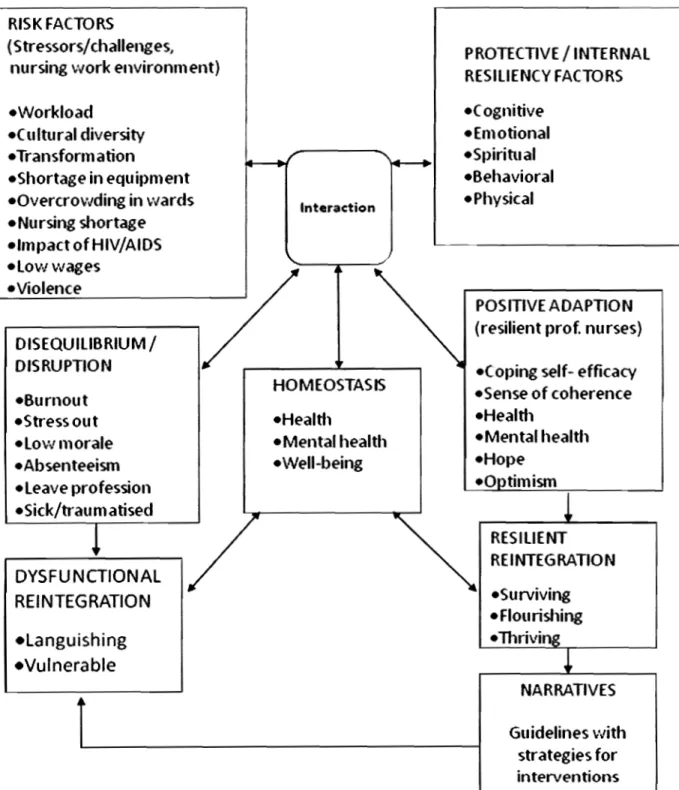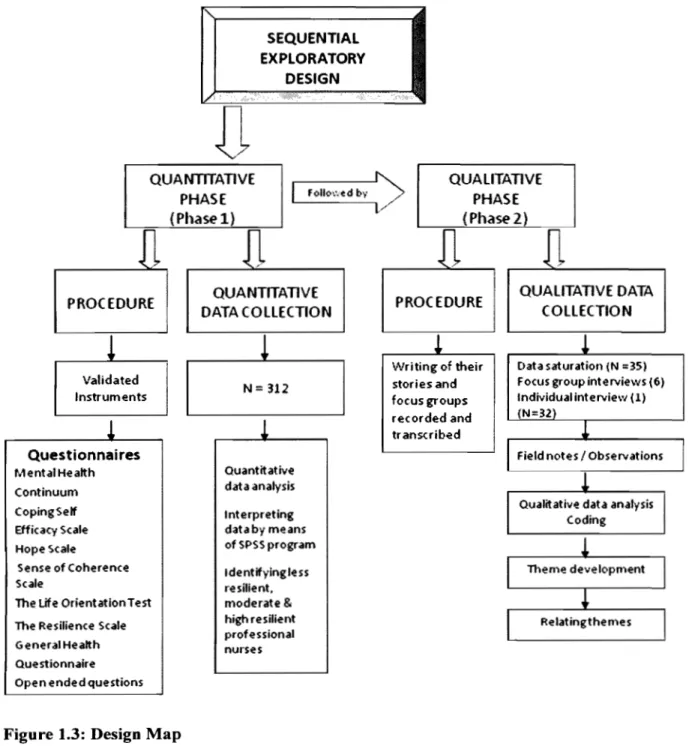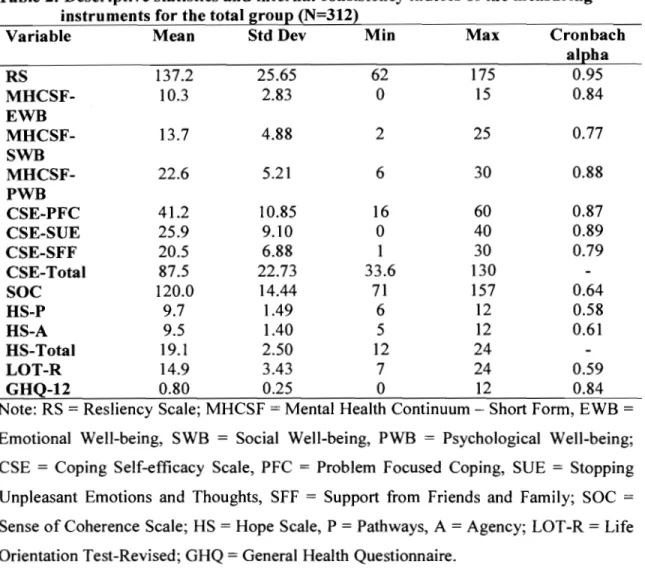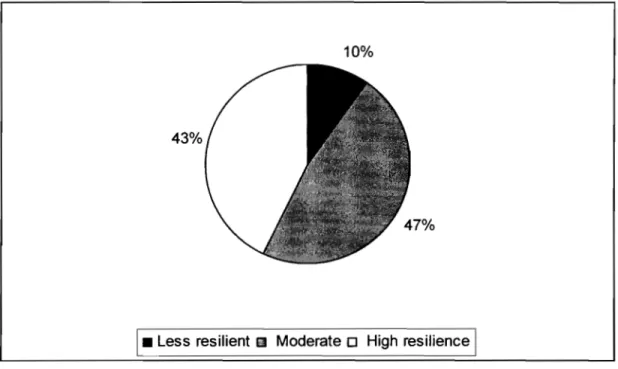MANUSCRIPT THREE: "Guidelines with strategies for interventions to increase resilience and psychosocial well-being in professional nurses". I certify that RESILIENCE IN PROFESSIONAL NURSING is my own work and that all sources I have used or cited are indicated and acknowledged by full references. Guidelines with strategies for increasing resilience and psychosocial well-being in professional nurses.
There is a lack of information about the concept of resilience as it relates to professional nurses. Information about the prevalence of resilience in professional nurses and a better understanding of identified resilient professional nurses' coping skills and robust adaptations can lead to the formulation of guidelines with strategies for interventions that can facilitate growth in professional nurses and benefit health. nursing service. This research examined the prevalence of resilience in professional nurses and listened to stories from identified resilient professional nurses to gain a better understanding of their coping skills and resilient adaptations.
The prevalence of resilience among the professional nurses in the first phase indicated the following: 10% as low resilience, 47% as moderate and 43% as high resilience. The stories followed by focus group interviews with resilient professional nurses provided useful data that could be used to develop guidelines with strategies for interventions to facilitate and improve the length of stay and psychosocial well-being in professional nurses, thereby transforming the nursing profession and healthcare were generally improved. .
SECTION ONE
OVERVIEW OF THE STUDY
SECTION TWO: MANUSCRIPTS
MANUSCRIPT ONE
MANUSCRIPT TWO
MANUSCRIPT THREE
SECTION THREE
CONCLUSIONS AND RECOMMENDATIONS OF THE RESEARCH
Problem statement
Much research has been done since Garmezy and colleagues first began studying resilience in the early 1970s (Garmezy, 1971). These are: (a) the achievement of positive outcomes in the face of adversity and (b) the qualities or characteristics that enable individuals to achieve positive outcomes in the face of adversity. Risk factors or stressors in the nursing work environment, such as the high workload, shortage of staff, poor support and role conflicts;
Information and a better understanding of the prevalence of resilience among professional nurses and the coping skills and resilient adaptations of resilient nurses can benefit the health care system and provide hospital managers with helpful non-threatening upskilling guidelines. and can facilitate the growth of professional nurses. The challenge is to identify resilient professional nurses (or nurses' lack of resilience) and try to learn from their experiences and functioning, in order to strengthen their strengths and coping skills. This awareness, in the context of the above analysis, prompted the researcher to conduct this study to investigate the prevalence of resilience among professional nurses and to identify the resilient professional nurses who had positively adapted to mostly adverse occupational conditions.
Information obtained can lead to the formulation of guidelines to facilitate and improve resilience and psychosocial well-being of professional nurses. What can be learned from the analysis of stories (narratives) of identified resilient professional nurses about their coping, strengths, resilience and positive adaptation in.
Research objectives
What guidelines with strategies for training and other programs to facilitate and improve the resilience and psycho-social well-being of professional nurses can be extracted from the results obtained from answers to the above questions.
Central theoretical argument
- Hope
- Data collection and operational context
In this study, the external environment refers at an empirical level to the professional nurse's work environment, namely the nursing profession, which is mostly a high-risk, stressful work environment. By using both quantitative and qualitative data in the research process, a single study aims to gain a better understanding of the phenomenon under study (Creswell, 2003), and the researcher can draw on the strengths of each and allow for a more robust analysis (Tashakkori & Teddlie, 2003). The second phase was qualitative and explored and analyzed the stories (narrating) experiences of resilient professional nurses who have been identified in the first phase of the study (Creswell.
The research methods included sampling, data collection and data analysis, and the role of the researcher was also discussed. The participants in the second phase were identified from the first phase and were the professional nurses with high resilience. To ensure validity, the sample size in the first phase of the study was estimated to be 300 professional nurses to be included (according to the statistical consultant), who were willing to participate voluntarily and complete the questionnaires.
The researcher was the primary instrument for data collection and analysis in the second phase of the research, although a coder was used for analysis. The presence of the researcher during the research activities was brief but personal, as requests were made for narratives and focus group interviews with participants (Marshall & Rossman, 1995), (Examples of field notes, part of transcription and written stories, Appendix I, J and K).
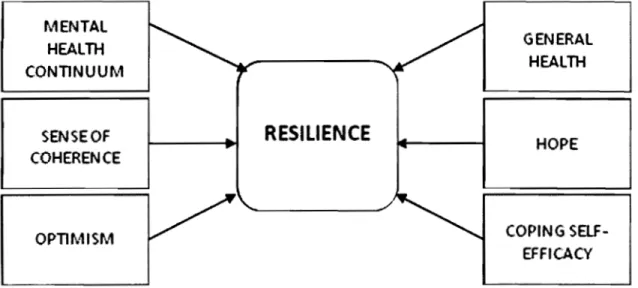
Rigor
A thoughtful introductory statement about the broad theme or topic of the research (why should I even bother to read on?); Give the reader an overview of what to expect in the rest of the article. Particular attention should be paid to the clarity of the research procedure for possible replication purposes.
Normally only a brief mention is given of the statistical procedures used in the analysis of the data. References cited in the text should all be listed at the end of the article. Information on the prevalence of resilience and positive psychosocial functioning in professional nurses could provide an indication of the nature and extent of the problem and the need for interventions.
It can be said that nursing claims care as a hallmark of the nursing profession. Detailed data were collected through narratives (N=35) followed by six focus group interviews and one individual interview (N=32). The involvement of a co-coder in the data analysis and consensus discussions increased the robustness of the results.
Many of the participants lamented that the nursing profession is not recognized or respected. The stress factors or demands of the nursing profession have the potential to threaten the well. be by the professional nurse. Protective factors: The uniqueness of the nursing profession and social support systems (personal and professional).
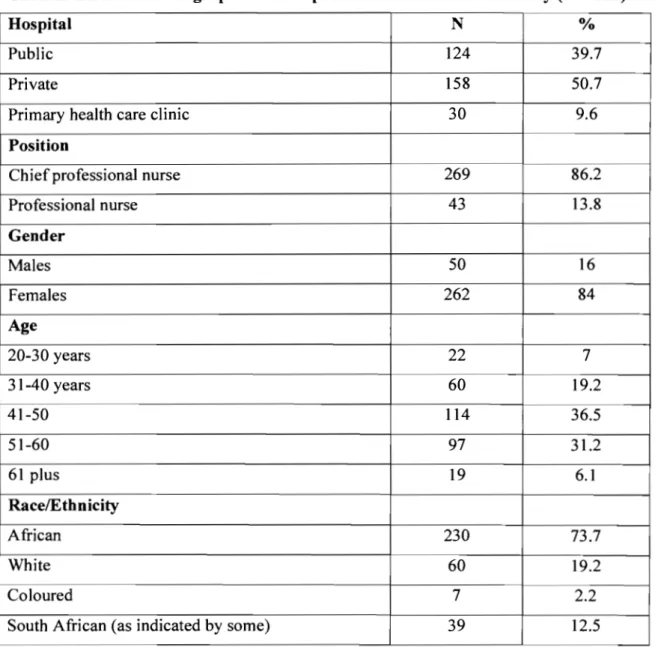
RECOMMENDATIONS OF THE RESEARCH
